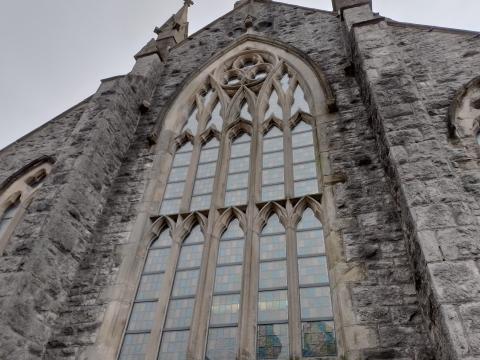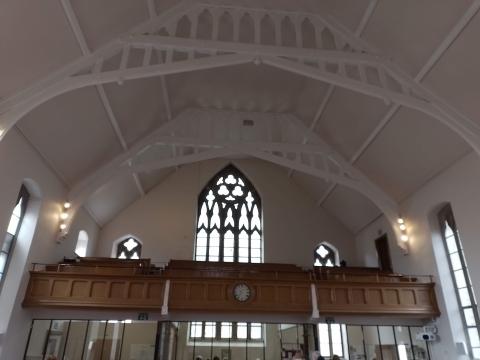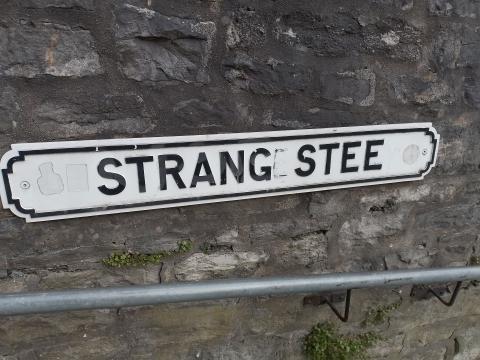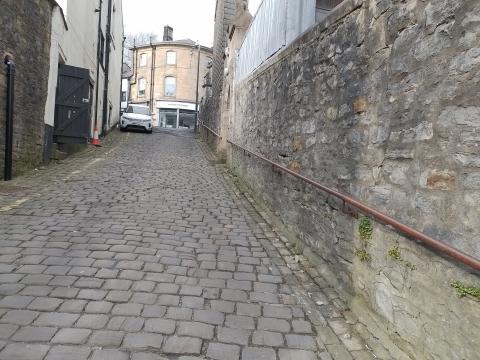The Old URC of Steep Strang Stee

For the first time, I called at the old Congregational Chapel in Clitheroe, now United Reformed, just opposite the town entrance to the castle. There was some kind of fair being held within, and for having crossed a lady's palm with a pound coin, I was invited to tour the tables and sample the wares. Little tempted me to part with more cash, except the smell of frying bacon, to which end I bought a butty. While eating it, I admired the building, and a church member came to talk to me, explaining the various renovations and costs to which my pound had presumably contributed.

It has one of those foolishly high ceilings, which made the chapel look sophisticated and impressive when built, but now absorbs much of the heat intended for congregants. Although the ceiling at Salem Chapel cannot be described as low, its rather humbler design is more conducive to keeping warm and managing the utility bills. High-roofed chapels look more ecclesiastical, but are otherwise best avoided.

Curiously, an alley runs to the chapel’s side, officially called Strang Stee, though informally referred to as Howards Entry. The former means ‘strong steps’ or ‘strong ladder’ in Middle or Old English, and may refer to the lane’s steep gradient.

Much human endeavour is concerned with climbing upwards: taller buildings, steeper lanes, walking mountains, ascendant careers. Yet the gospel tells of a God who reaches down. The Lord Jesus stooped low to pick us up; He stretched out His arms to pay for our crimes. Whether you attend a soaring cathedral or grandest chapel, whether you live atop a block of flats or a lofty hillside, remember Christ the Strong Ladder who came right down to carry you back up.
There is a green hill far away,
Outside a city wall,
Where the dear Lord was crucified,
Who died to save us all.
There was no other good enough
To pay the price of sin,
He only could unlock the gate
Of heav’n and let us in
-C.F. Alexander, 1848
- Log in to post comments


 Sunday Worship 10.45am & 6.00pm
Sunday Worship 10.45am & 6.00pm